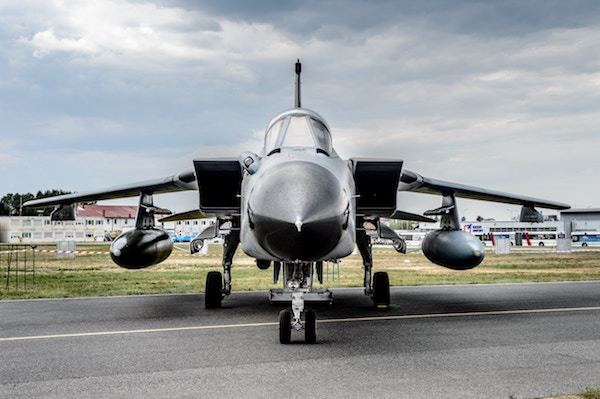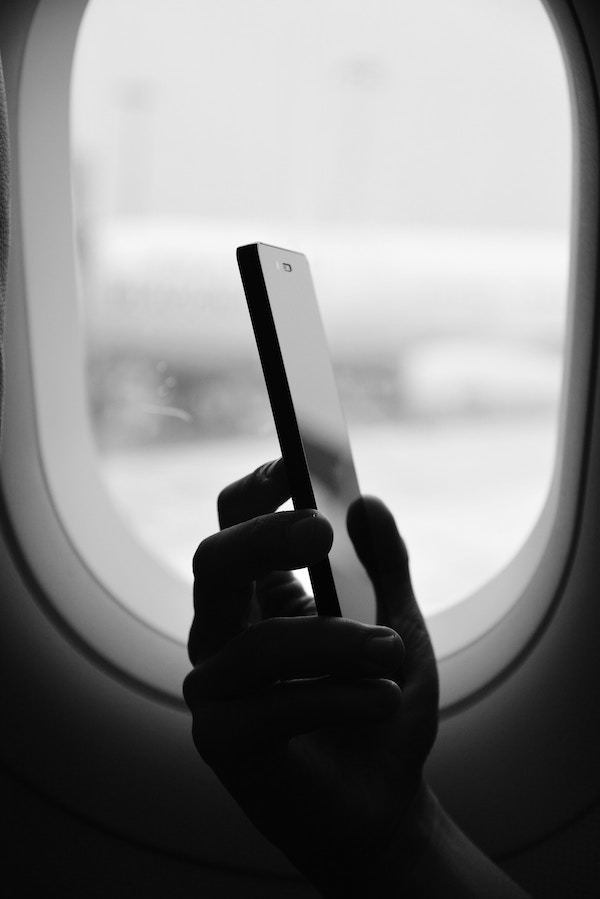
Stranded on the Tarmac? Here's What You Need to Know
When you’re stuck on the runway, your mind will race with multiple questions. Maybe you already know your rights for EU flight compensation, but what about if you are delayed at the tarmac? In this article we cover all you need to know about tarmac delay:
What is Tarmac Delay?
Have you ever been stuck on a plane, sat on the tarmac, impatiently waiting for the aircraft to takeoff?
Or, have you landed at your destination and experienced your excitement fade to irritation, as passengers were restricted from getting off the plane?
Both of these unfortunate situations count as tarmac delay.
When it comes to tarmac delays, there’s a limit between what’s normal and what constitutes a true delay. Since most air travellers have grown accustomed to some sort of a wait, the feeling that it could be a delay creeps up slowly until all of a sudden you think, is this plane ever going to take off? Are we going to have to deplane?
That’s why it’s important to take note of the time when the plane doors close. Then, if the wait feels like it’s getting a bit longer than normal, you can measure how much time you’ve been sitting on the tarmac. Believe it or not, there is something you can do if that wait is too long. If you experience a completely cancelled flight, then you can claim flight cancelled compensation, but if you are “just” stuck at the tarmac, you need to know your rights.
Tarmac Delay: Are You Aware of the Law?
According to the U.S. Department of Transportation, the tarmac delay rule only applies to tarmac delays that occur at U.S. airports.
The Department of Transportation also adds that the tarmac delay rule only extends to ‘covered carriers’. The definition of a ‘covered carrier’ is an airline that operates at least one airplane with airline seating of up to 30 or more, to, from or within the United States.
That means that although passengers who experience an extended tarmac delay at a foreign airport while flying to the U.S. may be protected against extended tarmac delays by the laws of another nation; they are not protected from extended tarmac delays by U.S. law.
How Long Can an Airline Keep You on a Plane?
In 2009, the Bureau of Transportation Statistics (U.S.), reported that over the summer, there had been an estimated 500 delays of at least three hours.
According to the renowned legal website, Nolo, in one particular incident that occurred in 2009,
“47 passengers spent almost six hours — longer than it usually takes to fly across the continental U.S. — sitting onboard a plane that was parked on the tarmac of Rochester International Airport in Minnesota.”
Clearly, there was a problem and a need for the law to reign the situation in.
To tackle this blatant infringement of air passenger rights, the U.S. Department of Transportation created a set of regulations on tarmac delay which came into effect in April 2010.
These federal rules ensure an airline cannot keep passengers on a plane for hours on end. Within these regulation, clear time limits are set for how long an airline can keep you on a plane.
This is to ensure air passengers’ rights are protected.
We’ve extracted the relevant parts of this U.S. regulation.

U.S. Tarmac Delay Laws
According to U.S. laws on tarmac delays, any delay of two hours or more requires special attention. Here’s a breakdown from the U.S. Department of Transportation:
After a tarmac delay of two hours, passengers must be provided with food, water, operational lavatories, and medical care (medical care only if needed).
- After a tarmac delay of three hours in the U.S., passengers must be given the option to deplane.
- After a tarmac delay of four hours outside of the U.S., passengers must be given the option to deplane.
There are, however, exceptions to these rules. The rules above do not apply in the following circumstances:
- If the pilot determines there is a reason to keep passengers on the plane, pertaining to safety or security .
- If air traffic control advises that taxiing to a place where passengers can deplane would significantly disrupt airport operations .
European Tarmac Delay Laws
European tarmac delay laws vary for better and for worse. For better, passengers are eligible for compensation just the same way a flight delay is eligible for compensation in Europe.
For worse, they don’t require giving passengers the option to deplane until the tarmac delay reaches five hours. But if the tarmac delay is one hour or more, it is mandatory that the plane provide air conditioning, lavatories, and water.
What to Do If You’re Stranded on the Tarmac (Or Have to Deplane)
If you’re stranded on the tarmac, keep the timing in mind. Once the delay hits 1-2 hours (depending on whether you’re on a U.S. or European flight), you should know what rights you have.
Are the flight attendants offering water? Are you being kept informed of the situation? If the answer to these questions is no, talk to the flight attendants and (kindly) remind them of your rights.
If the tarmac delay extends beyond a few hours and you’re not given the option to deplane, then the airline is not complying with the law. (Review the bullet points above to see which timeframe applies to your flight. You could also review your airline’s contract of carriage for an update on their policy.)
At that point, the airline can only keep you on the plane if it’s for safety reasons or to prevent a disruption of airport services.
If you end up in a situation in which the airline is not compliant with the law, file a complaint:
- Contact the airline via mail or email to register your complaint .
- The airline has 60 days to respond to you .
- If the airline doesn’t respond – or if you’re not happy with their response, you can then register a complaint with The Department of Transportation .
It may not be as easy as going through AirHelp to file a claim for compensation, but that doesn’t mean you shouldn’t fight for your rights when delayed on the tarmac! Air passenger rights are changing all the time and your diligence can impact that in a big way!
It’s important to note that an airline is under no obligation to let you back in if you deplane.
FAQ
Deplane—What You Need to Know About the U.S. Regulations
With regards to domestic and international flights, what is the length of time an airline can keep me on a departing flight before the airline is obligated to move the plane to a safe location where passengers can deplane?
For domestic flights departing from a U.S. airport, the airline is obligated to move the plane to a location where passengers can deplane before three hours. For international flights, it is four hours.
For domestic and international flights, how long can an airline keep me on an arriving flight?
For domestic flights landing at U.S. airports, airlines are obligated to give passengers an opportunity to deplane before three hours. With regards to international flights, it’s four hours.

What are the exceptions to these tarmac delay rules?
The time limits can be extended in the following circumstances:
- Safety
- Security
- Air traffic control-related reasons
Remember, even if you are an experienced air traveller, wait for permission by the aircraft to deplane safely before you disembark.
What if an airline allows me to deplane during a tarmac delay, is the aircraft responsible for alerting me when the plane eventually takes off, so I can board?
If the airline allows me to deplane during a tarmac delay and the aircraft eventually takes off, is the airline obligated to offload my checked luggage before take off?
No. In this situation, if you decided to check your baggage and not carry on, the airline is not required to remove your checked bags from the plane before taking off. You are responsible for contacting the airline to arrange the return of your luggage at a later date.
If I’m stuck on the tarmac because of a tarmac delay, how will I know when I can deplane?
In the case of a tarmac delay, the airline must give updates at 30-minute intervals informing passengers if they can deplane safely.
This is often done in two ways. Either the pilot or flight attendant will make an announcement using the aircraft’s speaker system. Or, the flight attendants may very well choose to alert passengers individually.
The airline is also required to inform passengers of the reason/s behind the tarmac delay.

Try as we might, we can’t always have our travel plans run smoothly. Air mishaps occur.
The important thing is to know your rights when they do. If you ever happen to be stranded on a plane, you’ll now be more savvy on the best action to take to turn your situation around.
Safe travels!
Flight delays happen, but that doesn’t mean you have to accept them. You may be entitled to as much as $700 in compensation if your flight has been delayed, canceled, or overbooked within the last three years.
85% of passengers don't know their rights. Don't be one of them.
AirHelp has been featured in:



